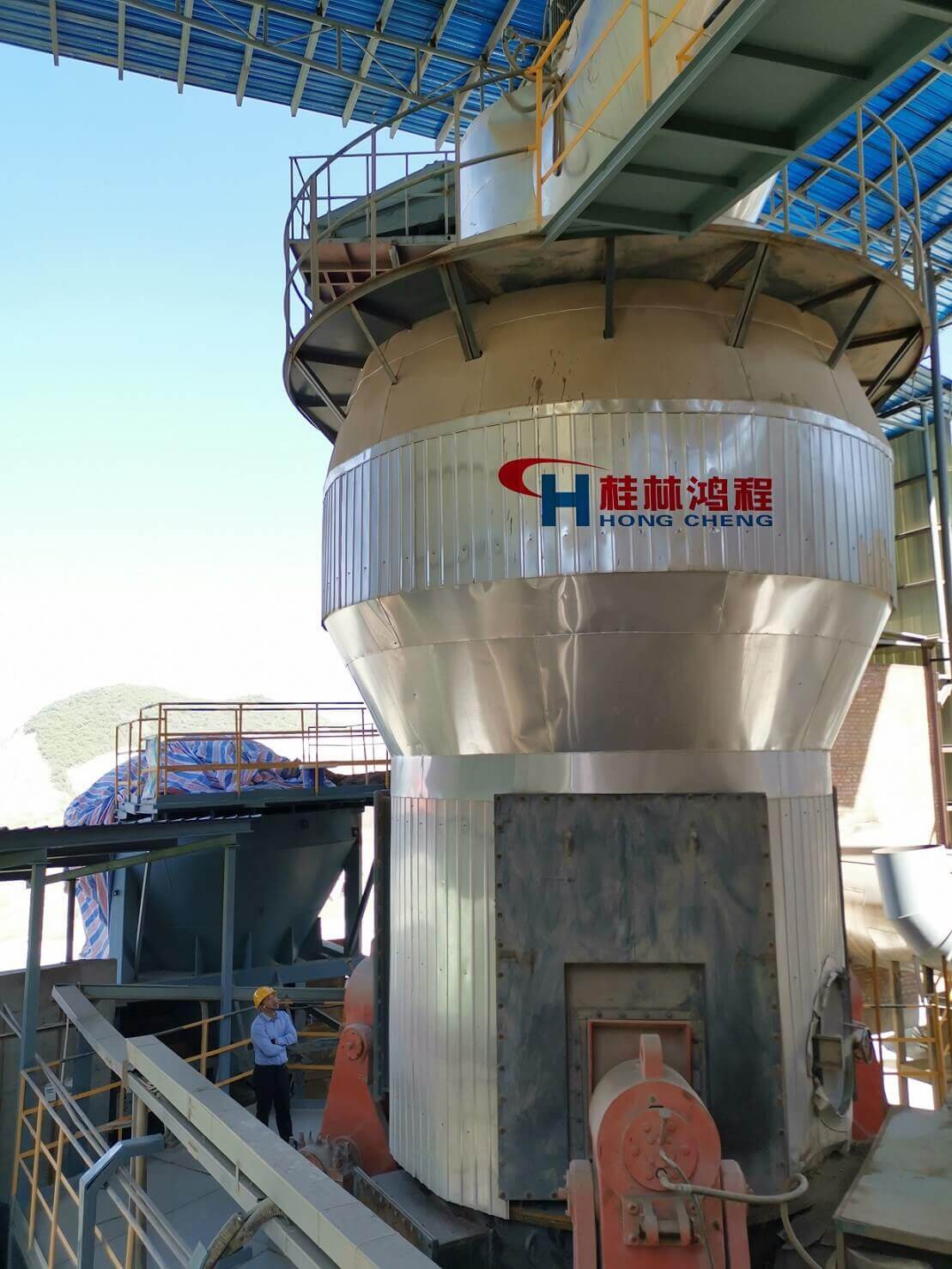What are the comprehensive utilizations of sulfuric acid residue? Sulfuric acid slag is a very valuable secondary resource. If sulfuric acid slag can be utilized, the shortage of iron ore supply can be greatly alleviated. Moreover, iron prices have risen in the past two years. Comprehensive utilization of sulfuric acid slag can not only protect the environment, but also avoid the waste of resources, and can also win profits for enterprises.

Utilization of Sulfuric Acid Residue HLM2000 Vertical Grinding Mill, welcome to leave a message or consult [email protected]
1. used as building materials
(1) Brick making: Since the content of active substances such as silica and alumina in sulfuric acid slag is low, a small amount of coal slag and coal ash must be added, and lime is used as the cementing material. The sulfuric acid slag is mixed with ingredients, rolled, and added. Press molding, steam curing and other processes to produce finished bricks. The utilization of sulfuric acid residue can not only produce ordinary wall tiles, but also produce colored wall tiles and colored glazed tiles.
(2) Cement making flux: Sulfuric acid slag is used as a cement flux. It can not only correct the composition of the Portland cement raw material mixture, increase its iron oxide content, reduce the modulus of alumina, but also increase the cement content, Strength, enhanced resistance to mineral water corrosion, and reduced thermal breakage. In addition, the roasting temperature can also be lowered, which is beneficial to reducing heat consumption and extending the service life of the refractory bricks in the roasting furnace. Cement production does not have strict requirements on the quality of sulfuric acid slag. The use of sulfuric acid slag as a flux for cement burning instead of iron ore powder is one direction of its comprehensive utilization. It is especially suitable for low iron content or sulfur or arsenic content, Treat sulfuric acid residue with more impurities.
2. Extraction of valuable metals
In order to avoid environmental pollution caused by sulfuric acid slag, sulfuric acid slag is used as raw material, and by adding active reducing agent (C6H1206), waste sulfuric acid is used to directly reduce the leached iron and produce iron yellow. Then, the copper in the leaching solution is extracted and recovered with a ternary extractant mainly composed of P204 (di-2-ethyl phosphoric acid), and gold and silver are extracted from the leaching residue using full mud cyanidation and zinc powder replacement processes. The valuable metals in the slag are recycled more economically and effectively. The recovery rates of iron, copper and gold reached 93.31%, 80.78% and 90.18% respectively.
3. Preparation of iron-based products
(1). Recover iron: sulfuric acid slag is used to produce iron concentrate. The ore dressing method is the most widely used and has achieved remarkable results. Common processes include: magnetized roasting-magnetic separation, gravity separation, gravity separation-magnetic separation, gravity separation-flotation and other combined processes.
(2). Preparation of ferrous sulfate: Preparation of ferrous sulfate from pyrite slag. The main processes include direct acid leaching reduction with sulfuric acid and high temperature reduction. The advantage of the high-temperature reduction method is that the recovery rate of iron in the slag is high, but the disadvantage is that the reaction temperature is as high as 800°C, the reaction process consumes a lot of energy, and the equipment is expensive; in the direct acid leaching reduction method, the reaction temperature is low and the energy consumption is small , but the recovery rate of iron in the slag is low.
(3). Preparation of iron red, iron yellow and iron black: The main methods for producing iron red from sulfuric acid slag include dry method and iron yellow calcination method. The dry method is to calcine the green vitriol (FeSO4●7H2O) prepared from the slag to obtain Fe2O3, which is washed, dried and pulverized to obtain an iron red product. The principle of reverse flotation can also be used to prepare iron red by the dry method of slag, adding ether amine and xanthate to remove silicon and desulfurization, then alkali leaching with ammonium salt to remove impurities, then oxidizing and roasting at 600~700°C, and grinding with sulfuric acid residue The product is obtained by grinding the equipment to 300μm.
The utilization of sulfuric acid residue is suitable for dry grinding. Raymond mills, vertical grinding mills and other equipment produced by Guilin Hongcheng are all dry grinding equipment that can help utilize sulfuric acid residue. It can process sulfuric acid slag powder with a fineness of 3-380μm. The output and equipment model can be selected according to needs. If you have relevant needs for sulfuric acid slag utilization, please leave us a message to learn about the equipment details.